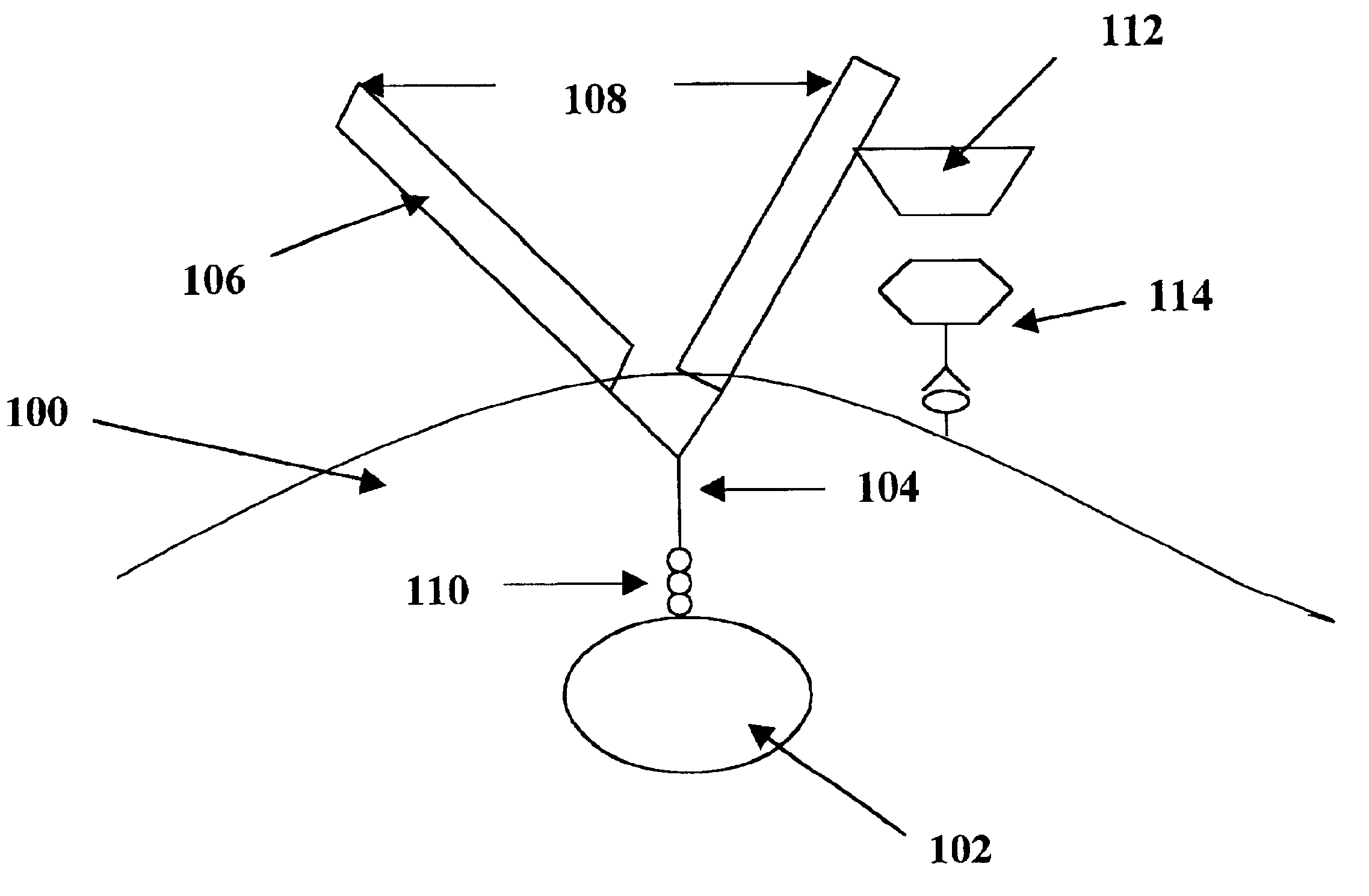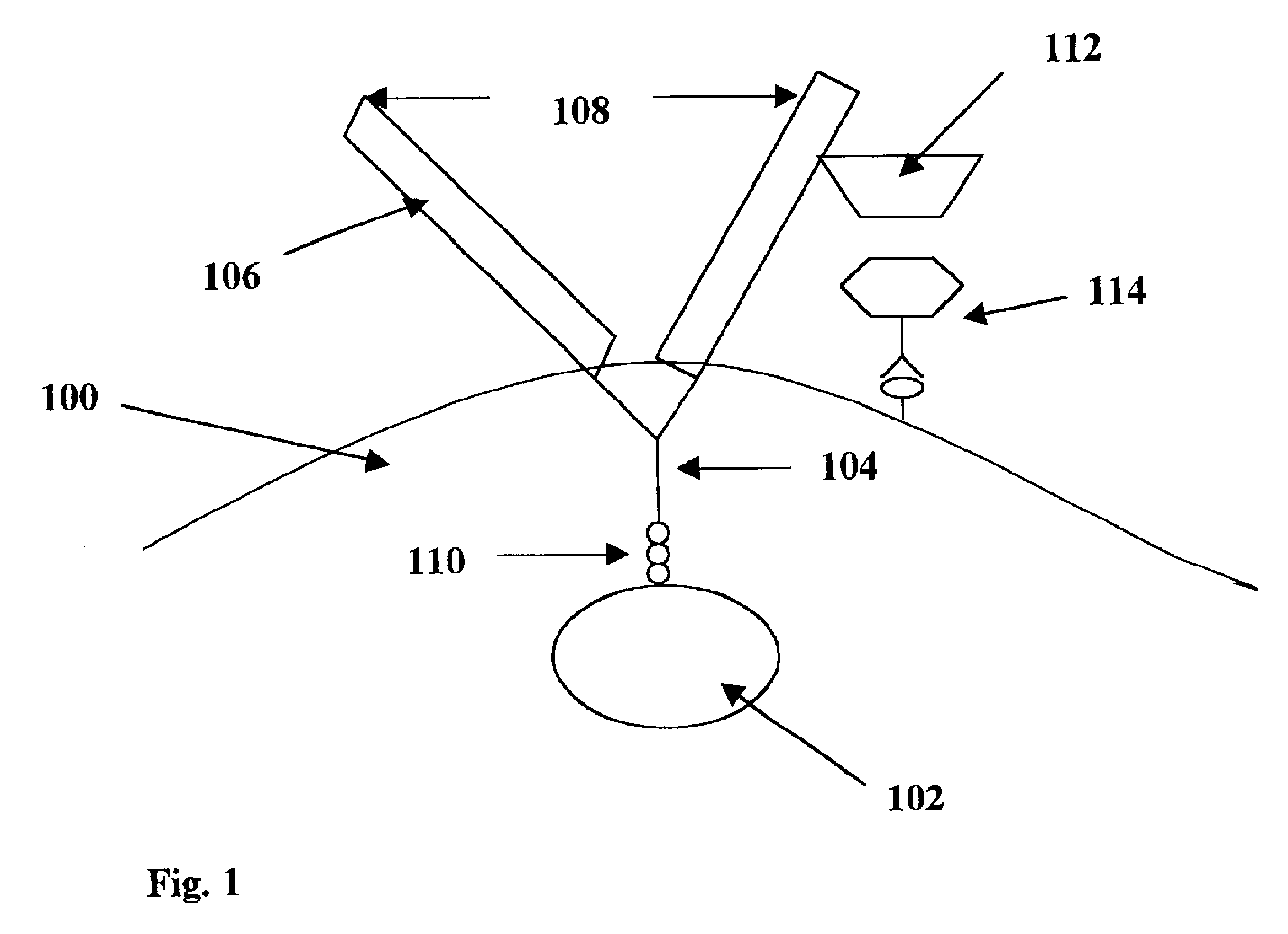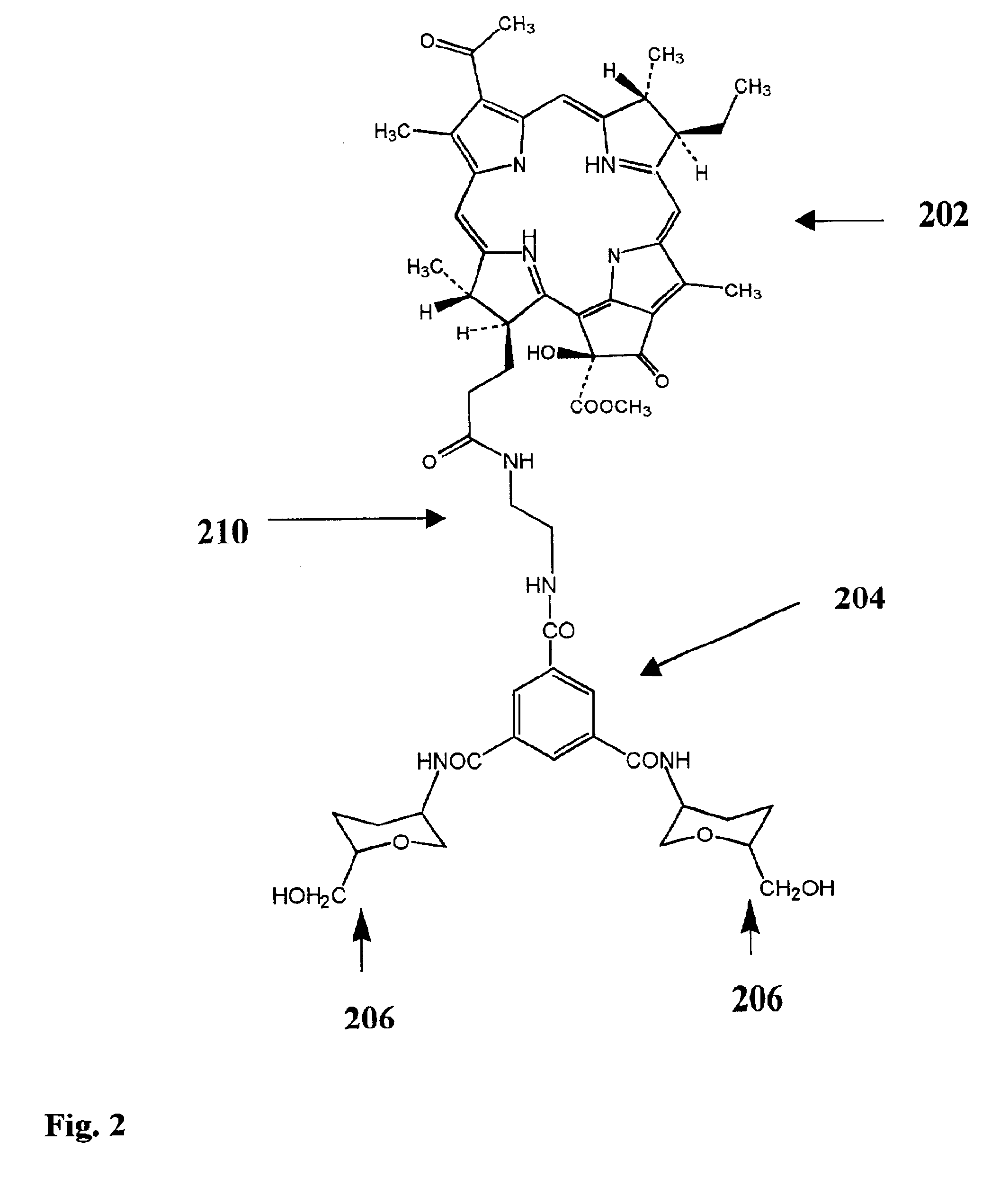Photosensitizers with ligand targeting properties for tumor therapy
a technology of ligand targeting and tumor therapy, applied in the direction of energy modified materials, peptides, drug compositions, etc., can solve the problems of reducing the usefulness of the drug, the potential of being more selective but not less effective, and several problems, so as to increase the specificity of the drug, enhance the effect of the photosensitizer, and reduce the dose necessary
- Summary
- Abstract
- Description
- Claims
- Application Information
AI Technical Summary
Benefits of technology
Problems solved by technology
Method used
Image
Examples
example 2
Treatment of Patients with the Substance and PDT
For a patient, a dose of 0.8-1.0 mg / kg of the product should be sufficient for intravenous injection. Irradiation should follow at 760 nm and after only 15 min. The light power should be reduced to 200 mW, and no more than 20 J / cm.sup.2 should be applied. The persistence of the dye in blood can be followed by fluorescence spectrometry and a reduction by a factor of 10 should be observed after 1 week.
PUM
| Property | Measurement | Unit |
|---|---|---|
| diameter | aaaaa | aaaaa |
| hydrophilic | aaaaa | aaaaa |
| enzyme cleavable breaking point | aaaaa | aaaaa |
Abstract
Description
Claims
Application Information
 Login to View More
Login to View More - R&D
- Intellectual Property
- Life Sciences
- Materials
- Tech Scout
- Unparalleled Data Quality
- Higher Quality Content
- 60% Fewer Hallucinations
Browse by: Latest US Patents, China's latest patents, Technical Efficacy Thesaurus, Application Domain, Technology Topic, Popular Technical Reports.
© 2025 PatSnap. All rights reserved.Legal|Privacy policy|Modern Slavery Act Transparency Statement|Sitemap|About US| Contact US: help@patsnap.com



